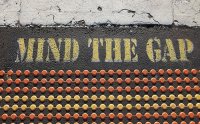How Teachers Use Technology: The Latest Research
Back in 2011, I wrote a post about the "New Digital Divide." Based on Pew Research data from 2011, it was apparent that, while many previously marginalized populations now had more access to the Internet, these populations were accessing the Internet mostly through mobile devices, which are limiting, especially when trying to build and create online or access job applications or opportunities. Just this past week, Pew released a new study called How Teachers Are Using Technology at Home and in Their Classrooms. It explores how teachers use the Internet for their own professional learning, with their students and for communicating with families.
Who's Connected and Who Isn't
As a member of a large online community of educators through Twitter and other social media outlets, I know how much of an impact the Internet has had on educators and their classrooms across the world. I was not surprised to read that 92% of teachers "say the Internet has a 'major impact' on their ability to access content, resources and materials for their teaching." As an urban educator, I was also not surprised to read that only 21% of teachers in high-income schools said that lack of access to digital technologies is an issue for their students, while 56% of teachers in low-income schools reported this an issue for their students. Cash-strapped school districts and districts with a large number of high-needs students do not have the resources to provide schools with digital technologies, such as classroom projectors, that many more affluent schools would consider commonplace.
One important finding that more of us in education need to pay attention to is the fact that "75% of AP and NWP teachers say the Internet and other digital tools have added new demands to their lives." I was surprised to read that teachers felt the Internet and digital tools required them to acquire a broader range of "content and skills." The study was not clear as to whether "content and skills" related to teachers learning how to use and implement new technologies, or whether teachers felt they need to know more to keep up with the massive amounts of content that students can now access online.
There is no question that the Internet and other digital technologies have required teachers to learn more and stay up to date with more than just pedagogy. I would argue that this is no different than any other field, though I wonder if educators are not provided the training that is provided in other careers. If the comment is based around educators believing that they are still the content providers and experts in the room, then that perceived deficit in skills and content is misplaced. Today's educator can no longer expect to know more than his or her students. Rather than trying to stay ahead of their students with the content they teach, they should be staying ahead of their students in guiding them through the process of navigating and accessing content. If teachers are still trying to deliver content to their students the way teachers have historically, then they will easily burn out and feel overwhelmed. This is not to say that teachers should no longer teach, but it's not humanly possible for us to always know more than our students when information is just a click away.
Same Old Digital Divide
One aspect of teachers' use of technology that was missing from the study and that I'd be interested to know more about is how access to digital technologies for both teachers and students has affected the role of the teacher and the student in the classroom. While the study focuses on the kinds of technology being brought into the classroom and used by educators at home and in the classroom, little is reported about how this has changed teachers' pedagogical approaches aside from how they give and collect assignments. While one can probably infer from the result how the roles of teacher and student have changed in classrooms that implement more technology, I would be interested to see what kinds of self-reported results would come out of such a study.
The main implications of this latest Pew study confirm what many of us already know to be common knowledge about the Digital Divide, a term that dates back as far as 1995 with this US Department of Commerce Study. This Divide between the "haves" and the "have-nots" runs along socioeconomic lines that essentially have not changed for decades (and maybe centuries). While access to the Internet has improved, the Divide has taken a new form, which has, in some ways, brought us right back to square one. Every new step toward equality is met with another step back that's based on access to devices and newly introduced technologies. We can no longer expect that ensuring Internet access for all will solve this issue. First, we must solve the deeper issues of inequity in our society.
